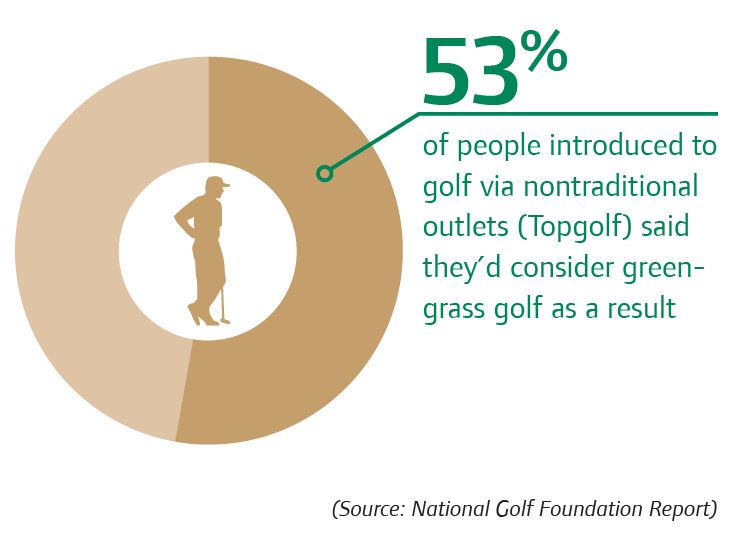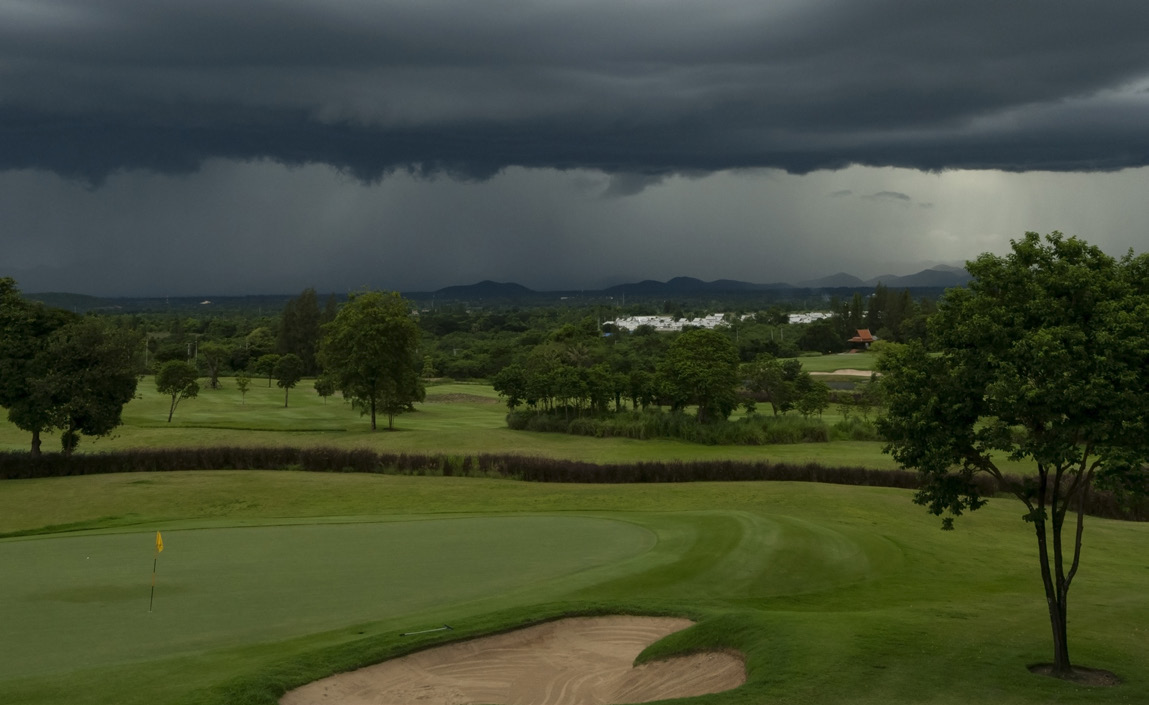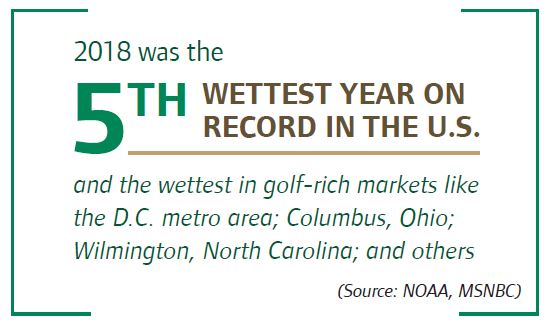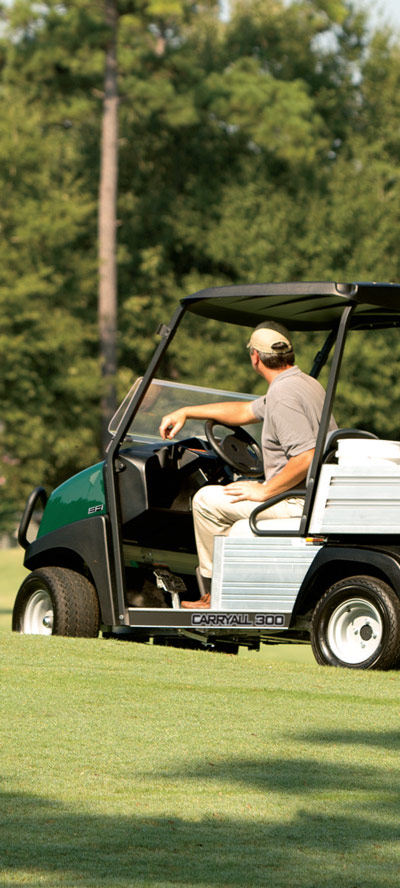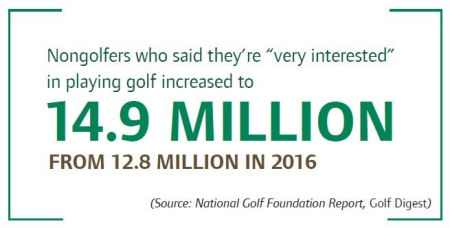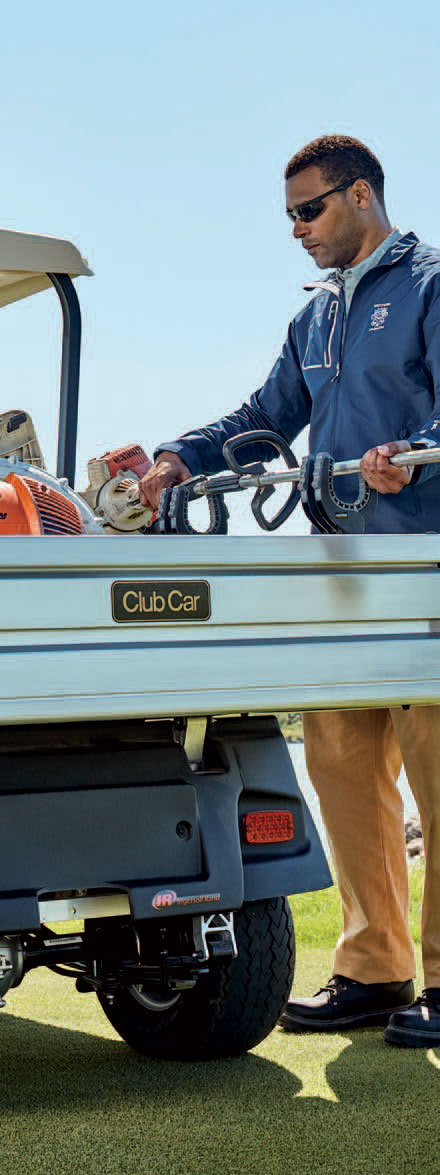GROUNDS FOR CONCERN
The Superintendents’ Mindset Heading Into 2019
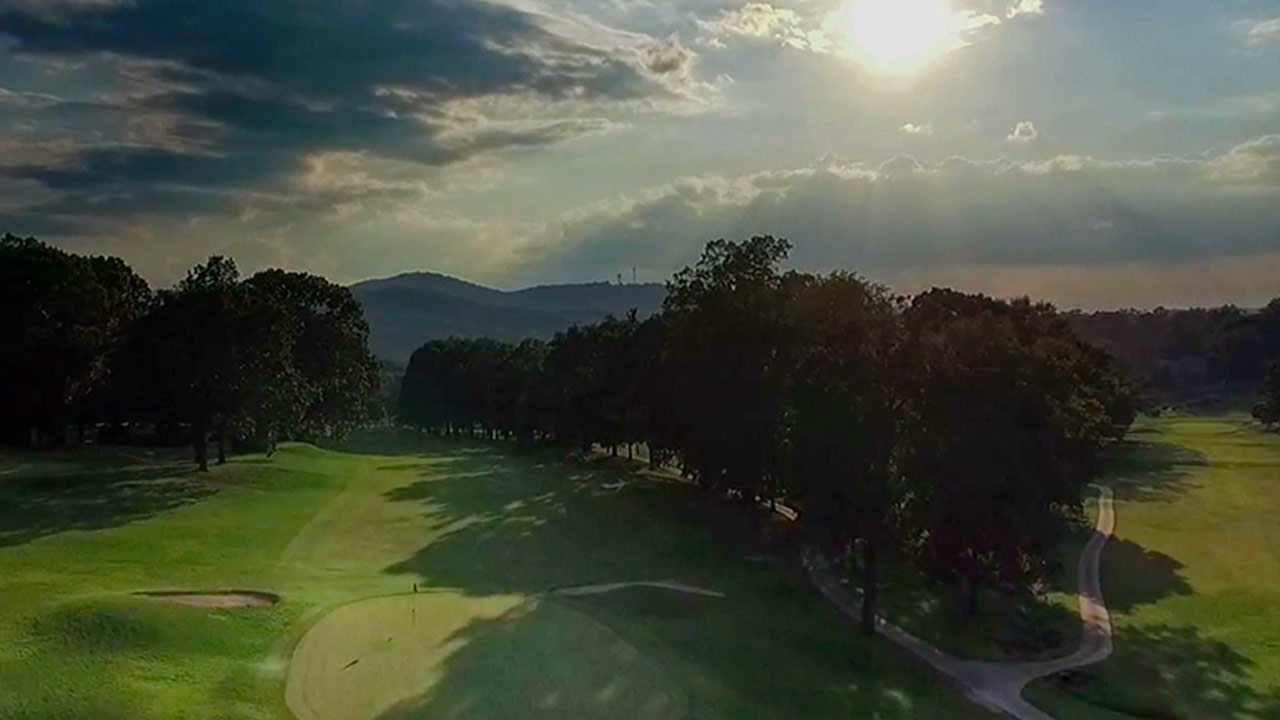
In many areas of the United States, 2018 represented one of the wettest – if not the wettest – years on record. Spring arrived later than normal and once it unpacked its bags, seemed content to stick around for a while. For many in the golf industry, spring long overstayed its welcome despite being kindly asked to leave.
The data was jarring: a late-year NOAA report said 2018 was the fifth-wettest year in the United States through October. With November came record cold for many areas (including the East Coast), and then rain returned later in the year. Major U.S. golf markets like Columbus, Ohio, Wilmington, N.C., Wisconsin and parts of the D.C. metro area saw their wettest years in 2018, using data that dated back 60 years.
IT WAS BAD FOR GOLFERS, AND IT WAS BAD FOR THE GOLF BUSINESS.
While the overall state of the golf industry is trending in the right direction – due in part to the rise of nontraditional facilities like Topgolf – there is now an elevated set of expectations for the traditional facility, which could see an increase in activity if the 53 percent of first-time golfers follow through on their newfound interest in green-grass golf. Golf course maintenance staff, led by the superintendent, are preparing for the upcoming season as soon as the previous season ends, but 2019 is shaping up to be different in many ways. There are nearly two million people working in the golf industry and half of them in “facility operations,” and because of Mother Nature, the likelihood that every one of them is facing the same challenges is perilously low.
There’s no denying that the future of golf looks different than many in the industry projected 10 years ago. In order to attract and retain a new generation of golfers, there’s a certain expectation from the consumer and that expectation falls on the shoulders of the facility – and more specifically, its golf staff.
What’s keeping you up at night? How are some of the industry’s bright minds preparing for a pivotal season? There’s a path forward and a plan for those who have the most unpredictable and taxing job in golf.
Unfortunately, one of the things we can’t control is the weather. And even more unfortunate is weather’s impact on the golf industry, which was even more exacerbated in 2018. For superintendents across the country, the trouble wasn’t so much recovering from the persistent rain and fluctuating temperatures, but making sure the damage wasn’t setting them back for 2019.
WEATHER OR NOT...
Unfortunately, one of the things we can’t control is the weather. And even more unfortunate is weather’s impact on the golf industry, which was even more exacerbated in 2018. For superintendents across the country, the trouble wasn’t so much recovering from the persistent rain and fluctuating temperatures, but making sure the damage wasn’t setting them back for 2019.
“We were cart-path-only 60 percent of the time in 2018,” said Zach Heiing, assistant superintendent of Jefferson Country Club in Blacklick, Ohio. “We only had to run irrigation on the greens twice all year, because day after day, we got hammered by rain. “The past two years we’d averaged 22,000 rounds, and last year, it was a 4,000-round decrease because of weather. We were up in membership, but the rounds were down.”
“We’re somewhat fortunate because we’re a private facility and driven by our membership – but if you’re a public course, how do you deal with that type of decrease in play? It’s devastating.”
Consider this: 53 percent of people who try golf for the first time at a nontraditional facility (Topgolf) say they’re more likely to consider green-grass golf as a result. With the number of golfers in the United States increasing every year already, there is an opportunity for the golf industry to capitalize on some momentum, but only if they have the capacity and ability to handle a higher volume.
“Public courses are where so many people are learning to play golf,” Heiing said. “Golf can’t survive on country club kids, and you need a healthy public facility environment to keep interest up and keep kids playing golf. Private golf is only a fraction of the golf community."
“GETTING CONVERSION OF PEOPLE FROM TOPGOLF TO GREENGRASS GOLF WILL KEEP GOLF MOVING, AND OUR RESPONSIBILITY IS TO KEEP THE FACILITY IN THE BEST CONDITION POSSIBLE.”
WHERE’S THE WORKFORCE?
Those on the turf side of the golf business know that staffing is one of the most important elements to their operation – and it’s becoming one of the most difficult to nail down. Turnover rates are skyrocketing and competition from restaurants and other hourly-wage jobs are diverting potential employees from golf, where summer temperatures are hot and the days are long.
Heiing said, in the mid-2000s, his turf program graduation class at The Ohio State University was nearly 50 students strong. Over the last few years, however, that same program is only graduating a handful of students per semester.
“When you multiply that by how many golf courses there are, it’s a problem,” Heiing said. “It’s tough to find people that know what they’re doing, and that’s all the way down the board.”
Brian Wilcomb, superintendent at Sunbury, Ohio’s Little Turtle Golf Club, echoed those sentiments. “(The problem is) both getting people here and then managing them and preparing them once they’re on-site,” he said. “Turnover throughout the turf industry has been incredibly high lately and it’s become one of our bigger headaches. How do we do this more efficiently? It’s a question we’re always looking for the answer to but we can’t seem to get it.”
It’s a common enough problem that it’s generated conversations about streamlining and making the labor process more efficient.
TECH TALK
Monitoring emerging technological trends has become paramount for turf professionals, in part because of changing weather patterns and also because of trouble securing consistent, capable labor. At Jefferson CC, Heiing’s staff utilizes GPS mapping technology across the golf course to get accurate moisture readings, salinity measurements, and other various data that they need to know on a daily basis.
Wilcomb’s staff at Little Turtle GC employes GPS-guided sprayers, which reduce the number of sprays needed per golf season, saving them significant money and allowing them to focus labor efforts elsewhere.
“We’re looking more toward technology – and that’s definitely where the industry is going – because of how difficult it’s become to get quality labor,” Heiing said.
The number of “you wouldn’t believe this…” comments uttered among turf professionals has become a running joke in the industry: each day typically produces a new challenge, a new fire to put out, putting strain on efficiency and workflow. On this side of the business, the work is always on display, meaning technology that’s both dependable and versatile rises to the top of the priority list.
“One of the great things about modern technology – particularly for turf professionals – is that it’s more durable and lasts longer, and while a lot of times it’s tough on the bottom line, at the end of the year you realized just how much you saved and what an impact it had on your operation,” Wilcomb said.
“You have to look at where you can trim as much fat as you can – you have to make the most of your labor,” Heiing added. “Adding two riding mowers helped us trim a couple of hours from that process. We’re looking to advanced technology to cut back on the hours and manpower we’ve lost along the way.”
WHERE DO WE GO FROM HERE?
The golf industry, holistically speaking, is in a better position than it was five years ago. Interest has increased, the rise of nontraditional facilities has opened the door for new players, and traditional facilities are following cues on how to improve their customer experience to take advantage of this new momentum. But with demand comes the need for labor, and also a cooperative weather pattern—both of which operated against the golf workforce in 2018.
Turf professionals are combating a labor struggle with a renewed focus on efficiency and technology, with the latter having a positive impact on the former. Club Car has heard these hardships firsthand in conversations with professionals across golf, and integrated the need for versatile, dependable turf management into its new Carryall 502, which will make its debut in fall 2019.
To design the 502, Club Car asked more than 400 golf course superintendents which features they need to make their jobs and lives on the course more efficient and productive. Launched to the 2019 GIS Show audience in February, the new 502 is an innovative reflection of their answers.
The Carryall 502 represents the next wave of technology combined with a level of detail that superintendents demand in their next vehicle. It has a high-visibility dash for clearer sight lines and turf examination, a spacious interior for four-legged friends, and a monsoon canopy with drainage channels that deflect moisture (critical for rainy years like the one we just had).
“We’d be silly to not look to technology to try to make up for what we’ve lost in terms of labor and time [because of weather],” Wilcomb said.
“What technology and these advancements are doing is extending the life of projects, and you can really cut back on cost and time spent. You can reassign labor more efficiently and, in turn, you’re getting better bang for your buck.”
Technology, innovation, and a desire to solve real problems for turf management professionals have catalyzed in Club Car’s latest offerings, including the Carryall 502. With more than 60 years of experience in the golf industry, we’ll partner with you to solve your pressing issues and drive success, no matter what comes at you in 2019.
For more information, or to request an onsite demo, contact us.
